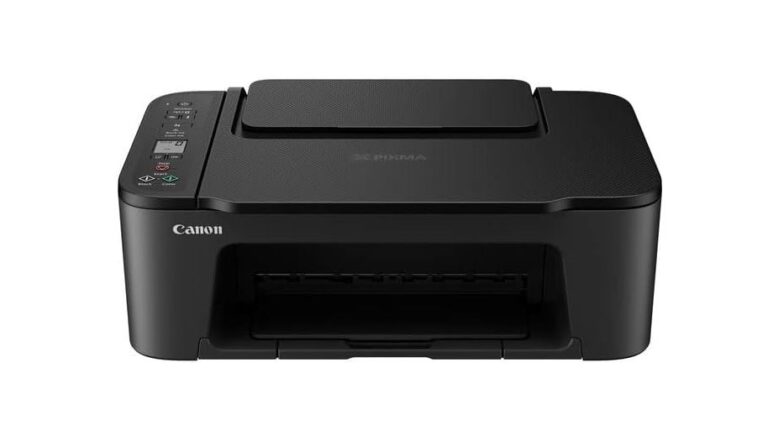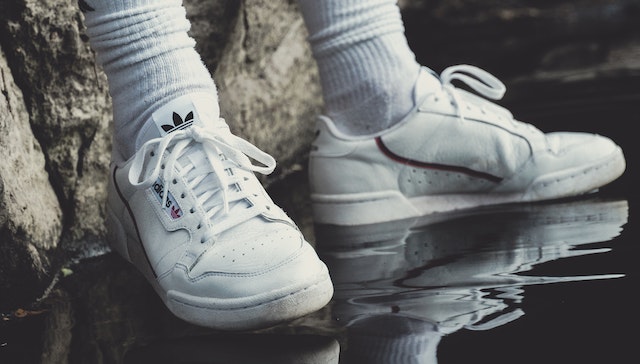How To Clean Enamel Paint?
As a result of its durability and smooth finish, enamel paint is an excellent choice for painting various surfaces that are subject to wear. The problem is, over time, enamel paint will accumulate dirt, grime, and other stains, and this will require proper cleaning to restore its pristine appearance and to prevent it from becoming dirty again. This guide will show you how to effectively clean enamel paint based on step-by-step instructions to ensure that you get the best results. There are a number of things that you can do to maintain the beauty and longevity of enamel paint, whether you are dealing with walls, furniture, or other surfaces painted with enamel. As a result, let’s examine the steps involved in cleaning enamel paint so that you can restore its original shine and luster once again.
Among the many types of paint, enamel paint is one of the most versatile and durable types, and it is often found on surfaces such as walls, furniture, metal objects, and even appliances. Its smooth and glossy finish gives any room a sense of elegance by adding a touch of elegance to it. There is, however, a possibility that enamel paint may accumulate dirt, stains, and marks over time as any painted surface, so it needs to be cleaned regularly in order to maintain its good appearance for as long as possible.
Step By Step Instructions To Clean Enamel Paint
To avoid damaging the enamel paint surface when cleaning it, it is necessary to use gentle methods. To make enamel paint cleaning as easy as possible, here is a step-by-step guide that will help you:
Step 1:Collect the necessary materials Before you start cleaning, you will need to collect the following materials:
-
Mild dish soap
-
Warm water
-
Soft, non-abrasive sponge or cloth
-
Bucket or basin
-
Clean towels or cloths
Step 2: Get a bucket or basin full of warm water so that you can prepare a cleaning solution. The dish soap should be added in a small amount and mixed gently until it is well dissolved. The enamel paint should not be damaged by harsh chemicals or abrasive cleaners that can cause the paint to chip or crack.
Step 3: Conduct a small test on a small, inconspicuous area of the enamel paint before cleaning the entire surface, as cleaning solutions is best tested on a very small, inconspicuous area before using the whole solution. By doing this, you will be able to ensure that while you are cleaning, the paint will not be affected or discolored in any way.
Step 4: Wet the sponge or cloth with the cleaning solution and dampen it with a soft, non-abrasive sponge. If it is dripping, make sure it has been thoroughly soaked, but not soaked to the point of dripping. Make sure the enamel paint isn’t oversaturated by wringing out any excess water that may be present.
Step 5: Use a damp sponge or cloth to gently scrub the surface of the enamel paint by gently scrubbing it with the sponge or cloth. Work your way down from the top, applying light pressure as you work your way down. The best way to get rid of dirt, stains, and marks is to use circular or back-and-forth motions. In order to get rid of visible grime or build-up, you should pay extra attention to those areas.
Step 6: Be sure to rinse the sponge or cloth thoroughly with clean water once you have finished cleaning the surface. With the sponge or cloth that has been rinsed, wipe the enamel paint surface to remove any soapy residue that may be left behind.
Step 7: Use a clean towel or cloth to gently dry the enamel paint surface after it has been cleaned with a solvent. In order to prevent water spots or streaks on the paint, make sure that it is completely dry before applying it.
Step 8: Using a spot cleaning solution to remove stubborn stains If there are stubborn stains that won’t come off with the soapy water solution, you might be able to remove them by using a spot cleaning solution.To clean the enamel surfaces, it is recommended that you use a thin layer of non-abrasive household cleaner specifically formulated for enamel surfaces.The stain should be rubbed gently in a circular motion, followed by a thorough rinse and drying of the area.
Keep in mind that it is very important to use gentle cleaning methods, and to avoid using abrasive materials or harsh chemicals that may damage the enamel paint. The appearance of your enamel-painted surface will be maintained if you clean it regularly in order to ensure its longevity and appearance.
When To Use Enamel Paint
Enamel paints are a versatile type of paint that can be used to paint a wide range of surfaces for a variety of purposes. Enamel paint is typically used in the following situations when it is most commonly used:
Metal surfaces:
The durability of enamel paint is well known, as well as its ability to provide a smooth, glossy finish on metal surfaces, which makes it a popular product for this application. In addition to protecting metal from corrosion and rust, it can also protect metal furniture, appliances, fences, and railings from rust as well.
Woodwork:
Enamel paint can be applied to wood surfaces, especially those with high traffic or that require a hard, durable finish, making it the ideal paint to be used on wood surfaces. Depending on the purpose of the paint, it can be used to paint doors, trims, cabinets, or furniture.
Trim and molding:
It is common to paint trim and molding with enamel paint because it is able to create crisp, smooth lines that are easy to work with. This glossy finish will add a touch of sophistication to the interior of the car and will protect it against wear and tear.
High-moisture areas:
Unlike other types of paint, enamel paint exhibits resistance to moisture, which makes it a suitable choice for areas that are likely to experience moisture, such as bathrooms, kitchens, and laundry rooms. This product helps to protect the surfaces from damage caused by water and makes cleaning them much easier.
Exterior surfaces:
Acrylic paints are commonly used to paint exterior surfaces such as door and window shutters, outdoor furniture, as well as exterior surfaces of many buildings. A durable, long-lasting finish is provided by this coating, as it stands up to exposure to the elements.
Decorative projects:
Enamel paint can be used to decorate ceramics, glass, or other craft projects that include decorative elements, such as painting ceramics, glass, or other materials. The glossy finish of these items enhances their appearance and enhances their durability.
It is necessary to be aware that enamel paint can emit strong fumes, which is why it should be used in an area that is well ventilated when applied. The proper surface preparation is also crucial to achieving the best results with enamel paint, such as cleaning and priming the surface properly before applying the paint.
Essentials Needed To Clean Enamel From Paint Brushes
The paintbrush is a very important part of any project whether you are going to paint an Airfix model or if you want to give all of your garden furniture a brand new look. You would probably use a paintbrush to apply the paint to your project. It is important to note that enamel paint dries very hard on all surfaces, including on the paintbrushes , as we have discussed previously.
Using warm soapy water to clean your paintbrushes can be an effective method of cleaning the paintbrushes if you are using water-based enamel paint. Upon removing all the paint from the brush, take a newspaper and wrap the bristles around it so that they dry smoothly and straight, ready to be used again the next time you use it.
If you wish to clean oil-based enamel paint off of paintbrushes, you will need some essential items for the task to be successfully accomplished. You will need the following supplies for the job.
It is important to have the following items available when cleaning enamel paint from your brushes:
-
A flat knife
-
A clean large can
-
White spirits
-
Warm soapy water
-
A screw-top jar
The process of cleaning your brushes can begin as soon as you have all of the above materials ready. Our easy-to-follow tutorial will show you how to do it step-by-step in just a few minutes.
Remove Enamel Paint from Brushes
There are a number of methods that can be used to easily remove enamel paint from brushes. Put your brushes in a hot bath or soak them in vinegar for a few minutes. It is also possible to clean your brushes with mineral spirits if these methods do not work for you. We have divided this topic into sub-sections so that you can explore the various methods of ensuring that your brushes are clean before your next project so that they will not be ruined.
Clean the Enamel Paint Off your Hands
Use the following solutions to clean the enamel paint off your hands. You will need to wash them with soap and warm water to remove the paint. Alternatively, you can use a white vinegar and baking soda scrub as an alternative method of removing enamel paint from your hands.
Wash Hands with Soap and Warm Water
Have you been painting your hands lately? Do you have paint on your hands? No need to worry about it, they will be able to recover, as long as you wash them with lukewarm water and soap. An example of a step-by-step guide can be found below:
-
Put your hands under running water and get them wet.
-
Take a piece of soap and rub it on your palms.
-
It is recommended that you rub the soap with your fingers and over your nails, thumbs, and wrists to remove the dirt.
-
Make sure that you scrub for a minimum of 20 seconds. The easiest way to keep track of what time it is is to sing “Have a nice birthday” twice.
-
Using running water, rinse the soap off of the skin.
-
Allow the air to dry the area or use a clean towel to dry it.
In order to keep your hands clean, you must make sure that you scrub them on all parts of your hands. The best way to ensure you get all the paint and debris off of your walls is to use a brush or scrubber with soap. It is very important that you rinse off all the soap that is left over after you wash your hands. The skin may be irritated if you use it in any other way.
Fun fact – in order for soap molecules to dissolve dirt and grease on our skin, it takes approximately 20 seconds for them to do so (Source: Centers for Disease Control and Prevention). Get rid of those pesky paint stains and say hello to a clean and fresh look!
Can you use enamel paint to paint over other paints?
A lot of people use enamel paint over other paints because it is oil-based and can be painted over any other paint.
As a rule, it is advisable to use a suitable primer to prime the surface before painting over the paint, depending on what kind of paint you are painting over and what kind of surface it is. If you are painting over an old paint, you may notice peeling and fading over time depending on the condition of the paint you are painting over.
Tips to Maintain Your Brushes
There is no doubt that brush maintenance is a very important part of your craft, especially when you are working with enamel paint, as it can be a lot more challenging to clean than other paints. If you are working with enamel paint on your brushes, here are some valuable tips that you can follow in order to maintain them properly:
-
Clean brushes immediately after use: As enamel paints dry quickly, it is essential to make sure that you clean your brushes after each use as soon as possible. It is advisable to dissolve the enamel paint from the bristles by soaking them in mineral spirits or a solvent suitable for enamel paints.
-
Use the right cleaning solution: When cleaning brushes used with enamel paint, use a solvent specifically formulated for enamel paint cleanup. Follow the manufacturer’s instructions and ensure proper ventilation when working with solvents.
-
Soak brushes for thorough cleaning: You can soak brushes in mineral spirits or a solvent suitable for the enamel paint in order to thoroughly clean the brushes. As a result of the friction between the bristles and the paint, it helps to loosen the dried paint and make it easier to remove it.
-
Gently agitate the bristles: Use your fingers or a brush cleaner to gently agitate the bristles of the brush after the brush has been soaked in water so that any remaining paint is dislodged. The bristles should not be bent or damaged during this process. Be careful to keep the bristles intact.
-
Rinse with water or soapy solution: In order to remove any remaining solvents or residue from the brushes, rinse them with water or a mild soapy solution once the majority of the paint has been removed. The bristles should be gently massaged to ensure that they are thoroughly rinsed.
-
Shape and dry the brushes: Once the brushes have been cleaned, they should be reshaped to their original shape by reshaping the bristles. In order to ensure that the bristles of the brush do not touch any surfaces when drying, it is best to lay them flat or hang them upside down. Consequently, these bristles will not bend or become misshapen as a result of this.
-
Store brushes properly: It is important to keep your clean and dry brushes in a clean, dry location away from dust, excessive humidity, or any other influences. If you want to maintain the shape of your brushes and protect the bristles, you should store them upright or in a brush holder.
-
Avoid using brushes for different types of paint: Some types of paint can be difficult to completely remove from brushes, so if you are going to use enamel paint, it is best that you designate certain brushes just for that purpose. If you want to prevent cross-contamination between different types of paint, avoid using the same brushes for them.
-
Inspect brushes regularly: Make sure that you check your brushes regularly for signs of wear, such as frayed bristles or loose ferrules. To maintain the quality of your brushwork, make sure to replace brushes that are no longer in good condition as soon as possible.
If you follow these tips and take good care of your brushes when working with enamel paint, you can ensure that they will last a long time and do their job to the best of their ability. If you use clean brushes to apply enamel paint to your projects, you will be able to achieve smooth and precise brush strokes, increasing the overall quality of the project.
Frequently Asked Questions – How To Clean Enamel Paint
Q: How often should I clean my brushes used with enamel paint?
The best way to prevent enamel paint from drying and hardening on the bristles of your brushes is to clean them immediately after every use. This will prevent the enamel paint from drying and hardening.
Q: Can I use water to clean enamel paint from brushes?
As enamel paint is not water-soluble, you may not be able to clean brushes used with enamel paint using pure water alone, as enamel paint is not water-soluble. The best way to clean enamel paint is to use a solvent or mineral spirits that are specifically designed to be used for this purpose.
Q: Can I reuse the solvent or mineral spirits for cleaning brushes?
Using an old solvent or mineral spirits may not be the most environmentally friendly way of cleaning brushes, but it is a good way of removing any paint particles from the used solution, before you re-use it.
Q: How long should I soak the brushes in the solvent?
The amount of paint to be soaked, as well as the amount of paint that is dry or stubborn, will determine how long it takes to soak. You can loosen the enamel paint from the brushes by soaking them in water for about 10 to 30 minutes before attempting to remove it.
Q: Should I wear gloves when cleaning brushes with enamel paint?
As a precaution, it would be wise to wear gloves as you may be exposed to solvents, mineral spirits, and enamel paint if you do not wear gloves. It is advisable to wear gloves when handling solvents, since some solvents can be harsh on the skin.
Q: Can I use a wire brush or harsh cleaning tools to clean enamel paint brushes?
Using wire brushes on enamel paint brushes is not recommended as it can damage the paint and leads to deterioration of the enamel. The bristles of the brush can be damaged by the use of these tools and the quality of the brush can be affected.
Q: How do I know if my brush is clean enough?
When you run your fingers through the bristles of a clean brush, you should not be able to see any visible paint residue or color coming off of them. In order to guarantee that all paint and solvent from the brush has been removed, the brush should be thoroughly rinsed until the water runs clear.
Q: Can I store my brushes without reshaping them?
I recommend that you reshape your brushes’ bristles before storing them to prevent them from losing their shape. If the bristles are reshaped, the bristles will dry in their original shape and will retain their shape for the duration of their use.
Q: What should I do if my brush bristles are frayed or damaged?
It is recommended to replace a brush if there is fraying or damage to the bristles of the brush. The quality of the brushwork you do with frayed bristles can affect the quality of the paint application you make, making the paint finish less desirable.
Q: Can I use the same cleaning techniques for enamel paint on other types of paint?
There may be a difference between the cleaning techniques for enamel paint and those for other types of paint. To ensure a proper and effective cleaning of your paint, it is best to follow the cleaning instructions specific to the type of paint you intend to use.







